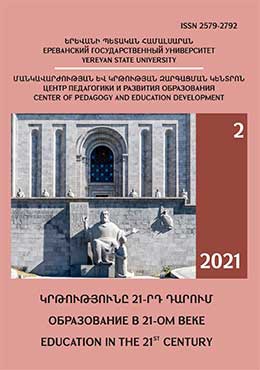PHYSICAL EDUCATION AND PHYSICAL TRAINING OF ADOLESCENT CHILDREN IN THE WORK OF A. MAKARENKO
DOI:
https://doi.org/10.46991/educ-21st-century.v2i6.11099Keywords:
Keywords: health, healthy lifestyle, physical fitness, physical education.Abstract
For many years, scientists from all over the world, raising and considering the issues of harmonious development of the individual, gave the leading role to physical culture, as part of the general culture of society, aimed at strengthening health, developing physical, moral-volitional and intellectual abilities of a person. Physical culture, physical education and sports are the fundamental components of physical development, which is the process of formation, formation, changes in individual morpho-functional qualities.
In the process of the formation of civilization, physical development and physical fitness of a person have always occupied a prominent place, since they indirectly determined the life expectancy of the population (through the formed physical health) and the economic potential of the country (through improved physical performance). In the changing conditions, which are complicated by the socio-economic situation in the world, a tendency towards a deterioration in the state of health of children, a decrease in the level of their physical activity, in the era of post-industrial society, the importance of physical fitness of children is growing, as it is the leading component of the formation of an active personality capable of productive life. for many years.
Physical fitness of young people for an active life today, as well as physical development - one of the determining factors in the development of the country. In this regard, the priority areas of educational policy should be not only strategies for reforming the education system, but also directions for further scientific research to ensure proper preparation of students for life, physical particular.
Today, the health and physical development of the younger generation, children of different ages, is on a descending gradation. The influence of gadgets, increased digitalization of activities, as well as oblivion of the natural rhythm of life, prescribed in the many years of work of teachers, psychologists, hygienists, doctors, leads to physical degradation of a person.
The study of pedagogical theory and practice has shown that the problems of the health and development of adolescent children have always attracted the attention of scientists. The analysis of the heritage of the past and present centuries provided grounds to establish that among a wide range of issues requiring additional scientific study, the most significant are the substantiation of the forms and methods of organizing physical training and physical education of adolescents, since adolescence is a period of active development and growing up, a sensitive period of development physical qualities that contribute to quality life.
References
Библиотека нормативно-правовых актов Союза Советских Социалистических Республик, 28/09/2021 http://www.libussr.ru/
Болманенкова Т.А. Основы физического воспитания: учебное пособие, Директмедиа Паблишинг, 2017, 236 с.
Макаренко А.С. Педагогические сочинения. Педагогика, 1983, 562 с.
Макаренко А. С. Сочинения в семи тома: Издательство Академии педагогических наук, 1958, Т. 5., 558 с.
Сидоряк З. Теория и практика физического воспитания детей в педагогическом наследии Антона Макаренко 28/09/2021, http://dspu.edu.ua/sites/youngsc/AQGS/2015_13/271-_%D0%A1%D0%-B8%D0%B4%D0%BE%D1%80%D1%8F%D0%BA.pdf.
Чижик Т. Г. Исторические истоки проблемы общей физической подготовки подрастающего поколения (XVI-XIX вв.), «Научный поиск молодых»: сборник статей аспирантов и магистров, 2017, № 1, с. 212-218.
Downloads
Published
How to Cite
Issue
Section
License

This work is licensed under a Creative Commons Attribution-NonCommercial 4.0 International License.

